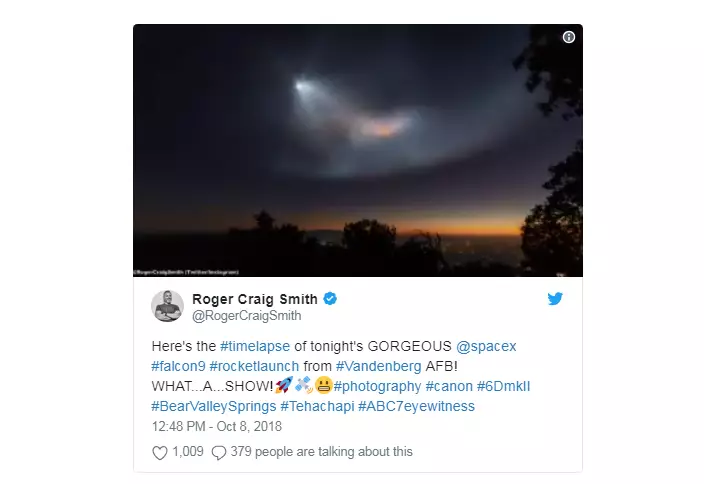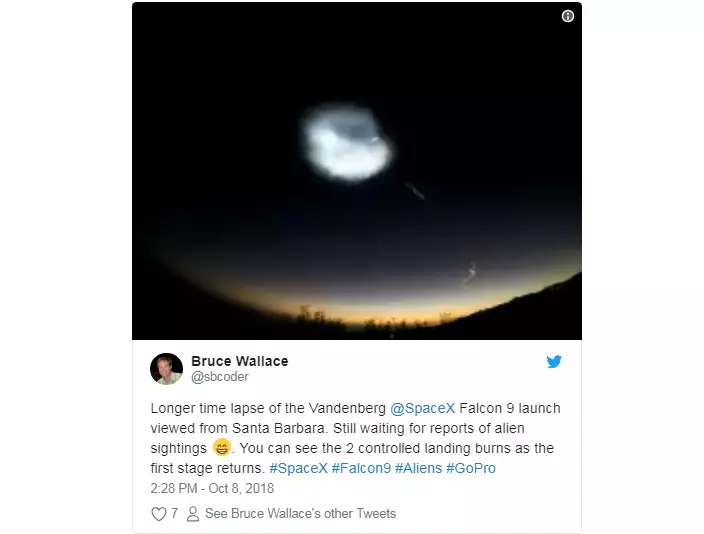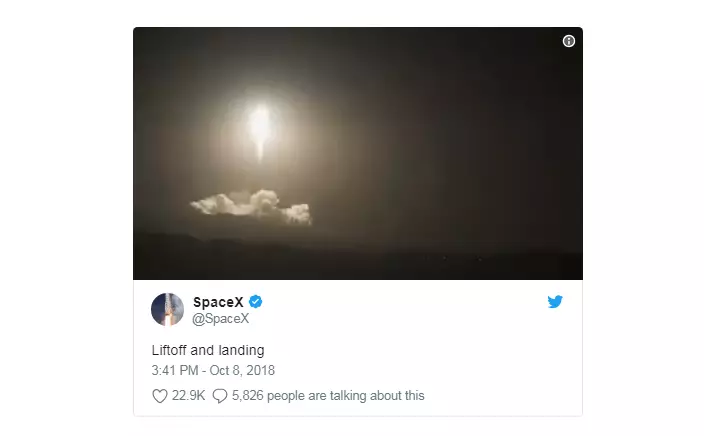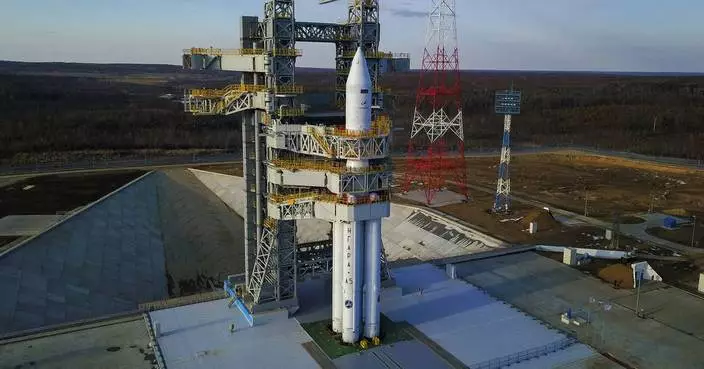Brad Gibson, head of physics at the University of Hull, has revealed why we saw such a remarkable sight.
The skies above Los Angeles were alight with a remarkable sight as SpaceX launched a satellite into orbit on its Falcon 9 rocket.
Click to Gallery
Brad Gibson, head of physics at the University of Hull, has revealed why we saw such a remarkable sight.
So what caused the stunning display of light? Well, Brad Gibson, head of physics at the University of Hull, has the scientific explanation.
“It certainly was spectacular and it led to a massive spike in Google searches for the phrase ‘UFO’, because it gave that sort of visual appearance.
Fortunately, Los Angeles mayor Eric Garcetti took to Twitter to assuage any concerns of paranormal activity.
While propelling the SAOCOM 1A satellite into orbit, the launch also saw the Falcon 9 rocket’s first stage booster land back at SpaceX’s California launch site for the first time on the US West Coast.
A burst of light could be seen over the Californian city for a number of minutes as the spacecraft, an Argentinian Earth-observation satellite, detached from its booster in the night sky.


So what caused the stunning display of light? Well, Brad Gibson, head of physics at the University of Hull, has the scientific explanation.
“You are seeing the same effect as one sees in planes, ie contrails forming – ice crystals condensing out of the exhaust vapour,” Brad told the Press Association.
“In this case, this was happening high enough in the atmosphere that, while to us on the surface the Sun had set 30 minutes earlier, up there, the ice crystals get lit up by the Sun, giving us a spectacular display down here on Earth.

“It certainly was spectacular and it led to a massive spike in Google searches for the phrase ‘UFO’, because it gave that sort of visual appearance.
“Elon Musk does these night-time launches for this exact purpose. He is a master in getting us to talk about SpaceX and Tesla.”
Indeed, many onlookers from the ground were stunned by what they were seeing.

Fortunately, Los Angeles mayor Eric Garcetti took to Twitter to assuage any concerns of paranormal activity.

While propelling the SAOCOM 1A satellite into orbit, the launch also saw the Falcon 9 rocket’s first stage booster land back at SpaceX’s California launch site for the first time on the US West Coast.
The landing of the booster is part of efforts by the space transportation service to cut the cost of space launches by re-using rockets.
The company, owned by Elon Musk, posted a video of the Falcon 9’s launch and successful return.

The satellite launched by Falcon 9 is the first of two for Argentina’s space agency, Comision Nacional de Actividades Espaciales.
The SAOCOM 1A carries a high-resolution instrument called a synthetic aperture radar, which will be used to try to monitor and predict the severity of natural disasters.
It will be followed by SAOCOM 1B in 2019.
MOSCOW (AP) — Russia on Thursday successfully test-launched a new heavy-lift rocket from its Far Eastern space complex, a lift-off that comes after two aborted attempts earlier this week.
The first attempt to launch the Angara-A5 rocket from the Vostochny spaceport on Tuesday was canceled about two minutes before the scheduled liftoff due to a failure of the pressurization system of the oxidizer tank in the central block of the rocket.
The second attempted launch Wednesday was also aborted by the automatic safety system, which registered a flaw in the engine start control mechanism, said Yuri Borisov, head of Russia’s state-controlled space corporation Roscosmos. He added that the failure was most likely rooted in a programming error.
Thursday's launch is the fourth for the Angara-A5, a heavy-lift version of the new Angara family of rockets that has been developed to replace the Soviet-designed Proton rockets.
The previous three launches were carried out from the Plesetsk launchpad in northwestern Russia.
After the 1991 breakup of the Soviet Union, Russia leased the Baikonur Cosmodrome from Kazakhstan and continued to use it for most of its space launches. The agreement with Kazakhstan allows Russia to keep leasing Baikonur for $115 million a year through 2050.
While Roscosmos has continued to rely on Baikonur, Russian authorities have developed Vostochny as the facility of choice for Angara launches. The construction of the new spaceport has dragged on for longer than planned and it has seen only limited use so far.
The development of the Angara-A-5, which is set to be the main launch vehicle for Russia’s prospective lunar research program, has also faced repeated delays and dragged on years behind schedule.
Like the Soviet-designed Proton it’s set to replace, the new rocket is intended to launch intelligence and communication satellites to geostationary orbits.

In this grab taken from video released by Roscosmos space corporation on Thursday, April 11, 2024 an Angara-A5 rocket lifts off from Vostochny space launch facility outside the city of Tsiolkovsky, about 200 kilometers (125 miles) from the city of Blagoveshchensk in the far eastern Amur region, Russia. Russia on Thursday successfully test-launched a new heavy-lift rocket from its Far Eastern space complex, a lift-off that comes after two aborted attempts earlier in the week. (Roscosmos Space Corporation via AP)

In this grab taken from video released by the Roscosmos space corporation on Thursday, April 11, 2024 an Angara-A5 rocket lifts off from Vostochny space launch facility outside the city of Tsiolkovsky, about 200 kilometers (125 miles) from the city of Blagoveshchensk in the far eastern Amur region, Russia. Russia on Thursday successfully test-launched a new heavy-lift rocket from its Far Eastern space complex, a lift-off that comes after two aborted attempts earlier this week. (Roscosmos Space Corporation via AP)

In this grab taken from video released by Roscosmos space corporation on Thursday, April 11, 2024 an Angara-A5 rocket lifts off from Vostochny space launch facility outside the city of Tsiolkovsky, about 200 kilometers (125 miles) from the city of Blagoveshchensk in the far eastern Amur region, Russia. Russia on Thursday successfully test-launched a new heavy-lift rocket from its Far Eastern space complex, a lift-off that comes after two aborted attempts earlier in themweek. (Roscosmos Space Corporation via AP)
















